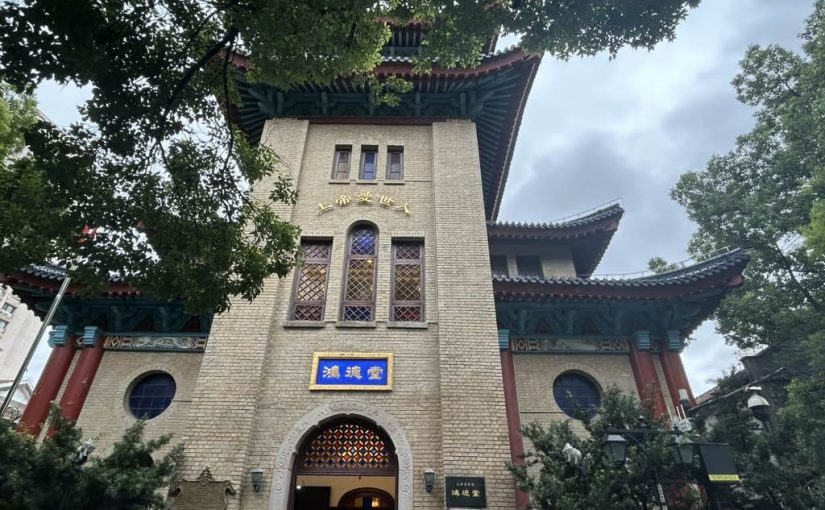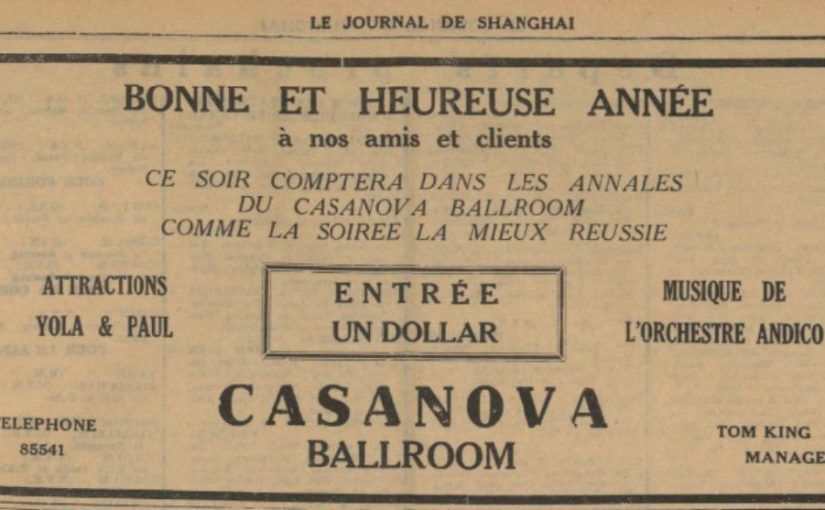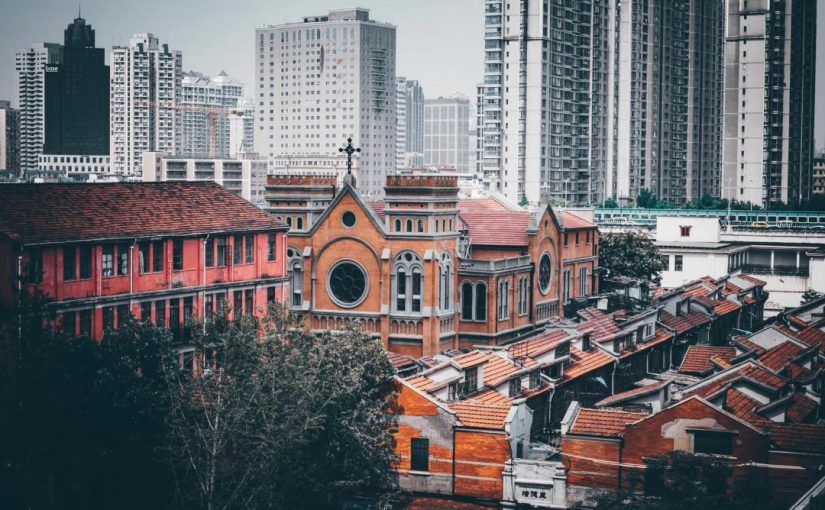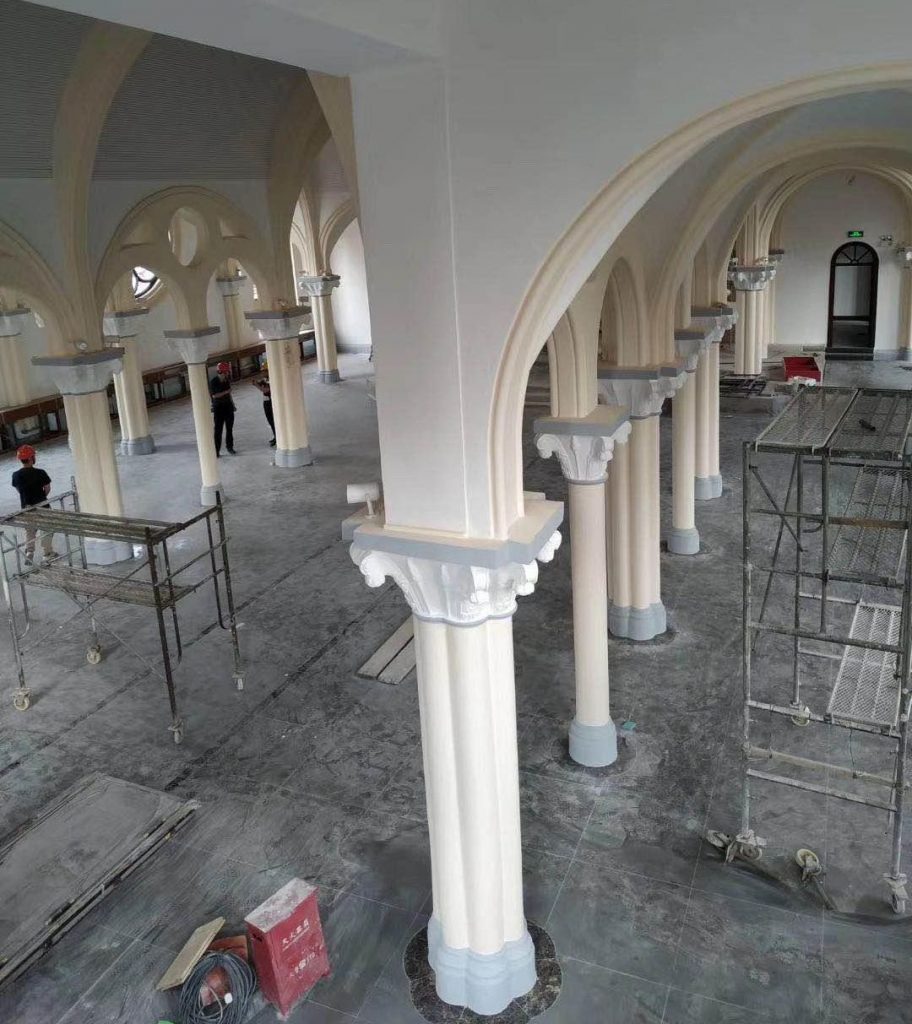There are many churches in Shanghai, as both concessions were hosting many christians religious people. Catholics was mostly supported by the French, with the Jesuits area of Xu Jia Hui being next to the former French concession. The international settlement was supporting the Church of England, with a cathedral behind the Bund. Many protestant missionaries were using Shanghai as a base to convert people all over China, and they also built Churches in Shanghai. I recently attended a Christian wedding at Fitch Memorial Church in Hong Kou district.
Fitch Memorial Church is the only church in Shanghai to be designed in the Neo Confucian style, also called Republican style. This combines the exterior of the traditional Chinese building, although built in concrete not wood, with the inside of a modern building.
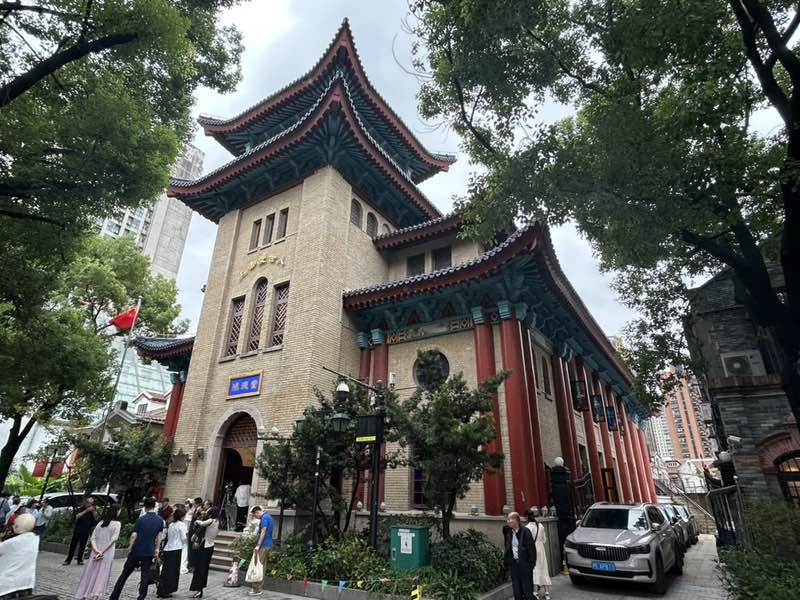
Fitch Memorial Chirch was completed in 1928. This is also the time when the whole Hongkou district was developing. The architect was Yang Xiulu / 楊錫鏐 which firm also built the Paramount Ball Room and the Nanjing Hotel on Guizhou lu. It also designed the YMCA building in Xizhang Road, that is of the same style than the Fitch Memorial Church.


The outside is rich with details.
Although there are many churches in Shanghai, it is still rare to have wedding in an actual church. The couple are both member of this church, creating a really special atmosphere. It felt a bit like in a movie.
The church has two full worship floors on the top of each other, which is rather rare. I guess this was planned to handle more ceremonies at the same time. The wedding was on the upper floor, but I could also get a view on the lower one.
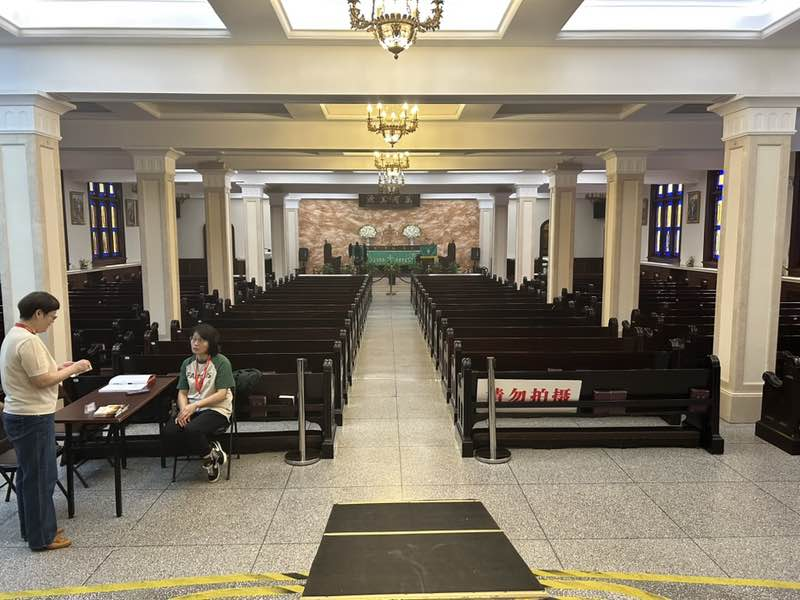

The church has been through a lot over history, including as a shelter for refugees during the 1932 Japanese attack and being used as an hospital during cultural revolution. It was refurbished in the 1990s with a lot of original details having been preserved including stained glasses below.
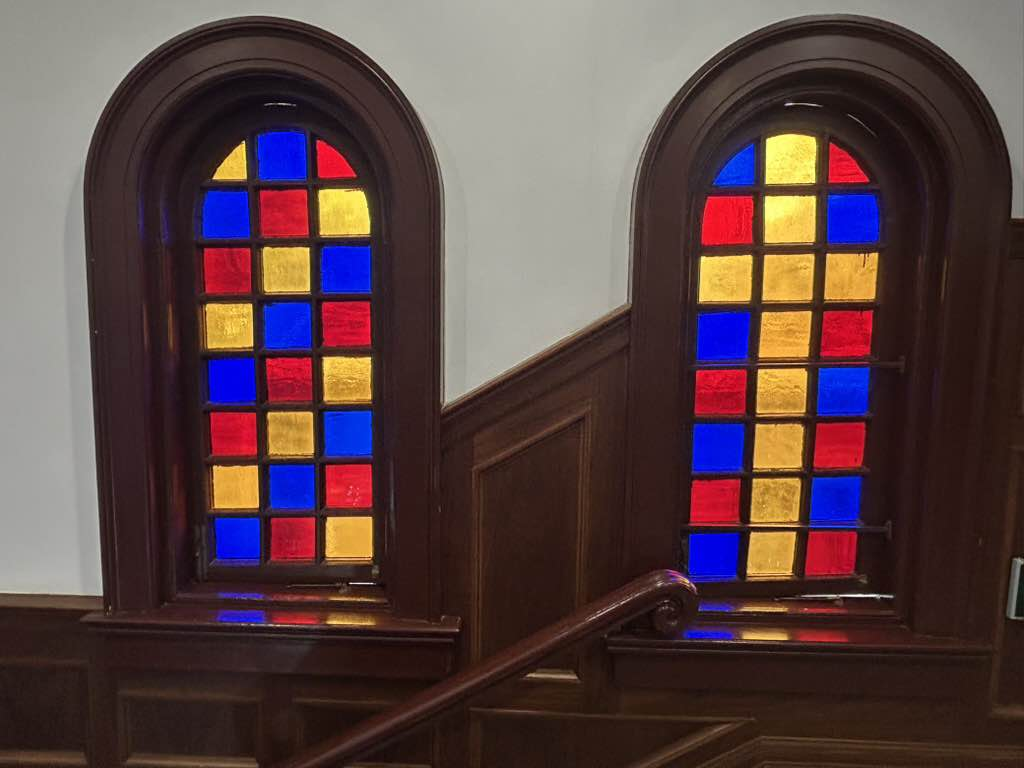

Fitch Memorial Church was name after Reverend George Field Fitch (1845-1923). Arriving in China in 1870, he become an important leader of the Presbyterian Mission Press. His work is credited with revolutionizing China’s printing industry and establishing Shanghai as a key publishing hub in Asia.
The Fitch Memorial Church is located at 59 Duolun Lu in Hongkou district.
Shanghailander articles are published on an irregular basis. To be notified when a new article is posted, subscribe to the newsletter using this link, or follow the Shanghailander Facebook page.
